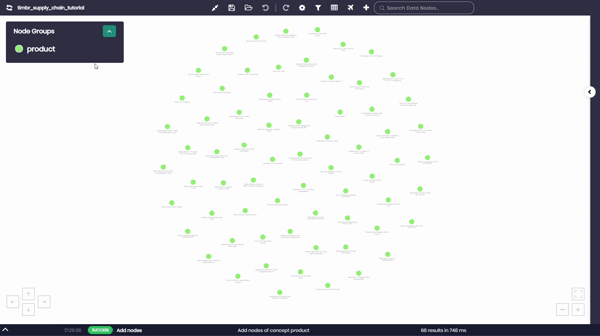
Organizations often find themselves juggling multiple Business Intelligence (BI) tools, each with its own way of defining and managing metrics. This fragmentation leads to inconsistency, increased maintenance overhead, and difficulties in scaling analytics across the enterprise.
Enter Timbr SQL Metrics Store – a universal, self-serve headless BI solution that’s changing how organizations handle their metrics. Let’s explore why this approach is gaining traction and how it addresses common enterprise analytics challenges.
The Power of SQL-First Metric Definition
At its core, Timbr takes a SQL-first approach to metric definition. While traditional BI tools like Power BI, Tableau, and Qlik use proprietary languages (DAX, Tableau Calculations, and Qlik Expressions respectively), Timbr leverages SQL – the lingua franca of data. This choice brings several immediate benefits:
- Leveraging Existing Expertise: Most data professionals already know SQL, eliminating the need to learn new proprietary languages.
- Native Database Performance: SQL measures execute directly in the database, optimizing performance by reducing data movement.
- Universal Compatibility: Through standard JDBC/ODBC connections, Timbr-defined metrics can be consumed by any modern BI tool.
Seamless Migration from Existing Tools
One of Timbr’s standout features is its ability to automatically convert existing metric definitions from other BI tools into SQL measures. Starting with Power BI’s .bim files, Timbr provides automated conversion tools that translate DAX measures into equivalent SQL definitions. This capability is being extended to other major BI tools:
- Tableau’s .tds and .twb files
- Looker’s LookML definitions
- Qlik’s expression files
This automated conversion significantly reduces the friction of adopting a centralized metrics store, allowing organizations to preserve their existing investments in metric definition while gaining the benefits of SQL-based implementation.
Intelligent Performance Optimization

Timbr’s 4-tier cache system provides flexible performance optimization options that users can manually select based on their specific needs:
- Local Database Cache: Ideal for real-time analytics requirements
- Data Lake Storage: Cost-effective for large historical datasets
- SSD-Based Cache: Balanced performance for frequently accessed data
- In-Memory OLAP: Maximum performance for critical dashboards
This tiered approach allows organizations to optimize their cost-performance ratio by selecting the appropriate cache level for different use cases. Unlike traditional BI tools that often force a one-size-fits-all approach to caching, Timbr’s flexible system ensures resources are used efficiently.
True Universal Compatibility
The headless nature of Timbr’s solution, combined with standard JDBC/ODBC connectivity, means that metrics defined in Timbr can be consumed by any BI tool that supports these standard protocols. This universal compatibility:
- Eliminates vendor lock-in
- Enables consistent metric definitions across all visualization tools
- Allows different teams to use their preferred BI tools while maintaining metric consistency
- Simplifies the process of switching or upgrading BI tools
Self-Serve Analytics with Guardrails
Timbr strikes a balance between governance and flexibility by providing:
- Centralized Metric Definitions: Ensure consistency across all analytics applications
- SQL-Based Accessibility: Enable power users to create custom analyses
- Semantic Layer: Abstract complexity while maintaining control
- Version Control: Track changes and maintain audit trails
This approach allows organizations to implement self-serve analytics without sacrificing data governance or metric consistency.
Cost Optimization Through Consolidation
By centralizing metric definitions and optimizing performance through its tiered cache system, Timbr helps organizations reduce costs in several ways:
- Reduced Duplication: No need to maintain the same metrics in multiple tools
- Optimized Resource Usage: Cache tier selection based on actual needs
- Simplified Maintenance: Single source of truth for metric definitions
- Lower Training Costs: Leverage existing SQL knowledge instead of multiple proprietary languages
Future-Proofing Your Analytics
As the BI landscape continues to evolve, Timbr’s approach provides several advantages for future-proofing your analytics infrastructure:
- Tool Independence: Easy adoption of new BI tools without recreating metrics
- Scalable Architecture: SQL-based approach scales with your data volume
- Extensible Platform: Growing support for additional BI tool conversions
- Standards-Based: Built on widely adopted database and connectivity standards
Feature Comparison Matrix
| Feature | Timbr SQL Metrics | Power BI (DAX) | Tableau | Qlik | Looker (LookML) |
|---|---|---|---|---|---|
| Query Language | Standard SQL | DAX | Tableau Calculations | Qlik Expressions | YAML/SQL Hybrid |
| Connectivity | Universal (JDBC/ODBC) | Power BI Service | Tableau Server | Qlik Engine | Looker API |
| Metric Portability | Any SQL-compatible tool | Power BI only | Tableau only | Qlik only | Looker Only |
| Performance Model | Multi-tier cache with user control | Import/DirectQuery modes | Live/Extract modes | In-memory only | Persistent derived tables |
| Migration Tools | Auto-conversion from DAX, Tableau expressions, Qlik Expressions and YAML | N/A | N/A | N/A | N/A |
| Learning Curve | SQL knowledge required | DAX expertise needed | LOD expression expertise | Set Analysis expertise | LookML/SQL expertise |
| Semantic Layer | SQL-based ontology | Tabular model | Data model | Associative model | LookML model |
| Cache Control | User-selectable tiers | Limited to import/direct | Extract/live only | In-memory only | Derived tables only |
| Integration Options |
- Standard JDBC/ODBC - REST API - Direct SQL |
- Power BI Service - Excel |
- Tableau Server - Web Data Connector |
- Qlik Engine API Extensions |
- Looker API - Embedded analytics |
| Version Control | Git-compatible SQL | Limited (.pbix files) | Limited (.twb files) | Limited (.qvf files) | Git-based |
This comparison highlights several key differences:
- Universal Connectivity: Timbr’s standard JDBC/ODBC approach provides the broadest tool compatibility
- Performance Flexibility: The multi-tier cache system offers more granular control than other solutions
- Migration Path: Automated conversion tools provide a clear upgrade path from existing implementations
- Standards-Based: SQL foundation reduces specialized knowledge requirements
- Tool Independence: Metrics can be used across multiple BI platforms without redefinition
Conclusion
Timbr SQL Metrics Store represents a paradigm shift in how organizations can manage their metrics and analytics. By providing a universal, SQL-based approach to metric definition, combined with intelligent performance optimization and broad tool compatibility, it addresses many of the key challenges facing modern data-driven organizations.
The ability to automatically convert existing metric definitions, combined with flexible performance optimization options and universal tool compatibility, makes Timbr an attractive option for organizations looking to streamline their analytics infrastructure while maintaining flexibility and control.
As organizations continue to grapple with the challenges of maintaining consistent metrics across multiple BI tools and teams, solutions like Timbr that provide a unified, standards-based approach to metric definition and management will become increasingly valuable. The future of business intelligence lies not in proprietary tools and languages, but in open, flexible solutions that enable true self-serve analytics while maintaining governance and consistency.
Don’t Let Fragmented Metrics Hold You Back. Start Your SQL-Powered Metrics Store Today!

